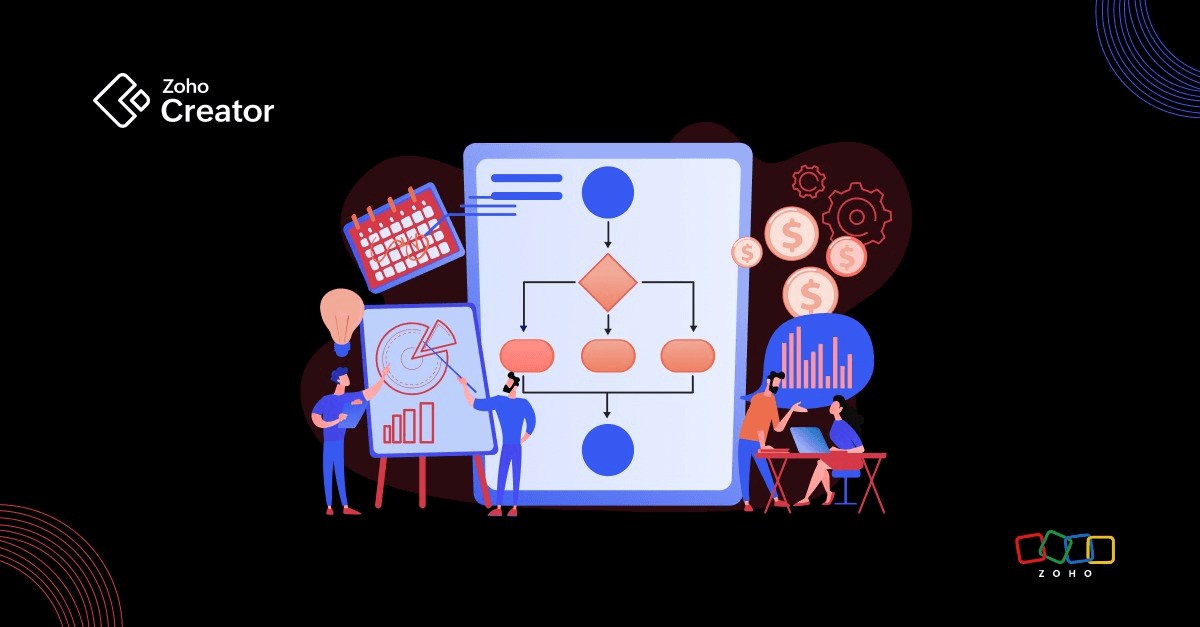- HOME
- Know Your Tech
- Workflow success starts here: Why forms are essential
Workflow success starts here: Why forms are essential
- Last Updated : May 27, 2025
- 259 Views
- 3 Min Read
Imagine building a house without a foundation, or trying to bake a cake with the wrong ingredients. The result would be, well, less than ideal. In the world of business processes, forms play one of those crucial foundational roles—they're the concrete that supports your operational structure and the measuring cups that ensure precision in your data collection.
The gateway to quality data
Forms are your first line of defense, ensuring that only the right information gets through in the right format. When designed properly, forms act as data bouncers, checking IDs (validating input), maintaining order (standardizing format), and keeping troublemakers (errors and inconsistencies) out of your system.
Breaking down the critical role of forms in workflows
1. Data standardization
Just as a recipe requires specific ingredients in specific amounts, workflows need standardized data to function effectively. Forms enforce this standardization by:
Providing predetermined input fields.
Setting format requirements (dates, phone numbers, and much more).
Limiting responses to relevant choices through dropdowns and radio buttons.
2. Error prevention
Like a spell checker in your word processor, well-designed forms catch mistakes before they cascade through your system. They:
Validate data in real time.
Prevent the submission of incomplete information.
Flag inconsistencies immediately.
Guide users with clear instructions and examples.
3. Process efficiency
Forms are the rapid transit system of your workflow, moving data quickly and efficiently to where it needs to go. They:
Automate data routing.
Eliminate manual data entry.
Reduce processing time.
Minimize the need for follow-up communications.
4. Compliance and documentation
In today's regulatory environment, forms serve as your digital paper trail. They:
Capture required information systematically.
Create automatic audit trails.
Ensure consistent compliance with regulations.
Maintain standardized documentation.
5. User experience enhancement
A well-designed form is like a skilled concierge—it guides users through complex processes with ease:
Breaking down complex requests into manageable steps.
Providing context-sensitive help.
Adapting to user inputs dynamically.
Offering a consistent interface across different processes.
The ripple effect of poor form design
Just as a small leak can sink a great ship, poorly designed forms can compromise your entire workflow:
Garbage in, garbage out: Bad data entry leads to flawed analytics.
Process bottlenecks: Unclear forms create user confusion and delays.
Increased operational costs: Time spent correcting errors adds up.
Reduced user adoption: Frustrating forms lead to workflow abandonment.
Best practices for form design in workflows
1. Keep it simple.
Think of your form as a conversation. Ask only what's necessary, when it's necessary:
Remove redundant fields.
Use conditional logic to show relevant fields.
Break long forms into logical steps.
2. Make it smart.
Modern forms should work like a thoughtful assistant:
Pre-fill known information.
Offer autocomplete suggestions.
Provide real-time validation.
Calculate derived values automatically.
3. Design for scale.
Your forms should grow with your business:
Make them mobile-responsive.
Ensure they integrate with other systems.
Build in flexibility for future modifications.
Include analytics capabilities.
The future of forms in workflows
As technology evolves, forms are becoming even more crucial to workflow success:
AI-powered form suggestions.
Natural language processing for better user interaction.
Automated data extraction from documents.
Predictive field population.
Conclusion
Forms are far more than just data collection tools—they're the fundamental building blocks of successful workflows. Like a well-designed foundation, they provide stability, structure, and support for your entire business process architecture. By investing time in creating thoughtful, user-friendly forms, you're not just collecting data; you're building the framework for operational excellence.
Remember, the quality of your workflows can never exceed the quality of your forms. Make them count.
 Szhruthi Boopathy
Szhruthi BoopathyPassionate product marketer specializing in low-code and AI-powered app development. When I'm not crafting compelling content and video collaterals, you'll find me immersed in the world of painting or lost in a good book.



